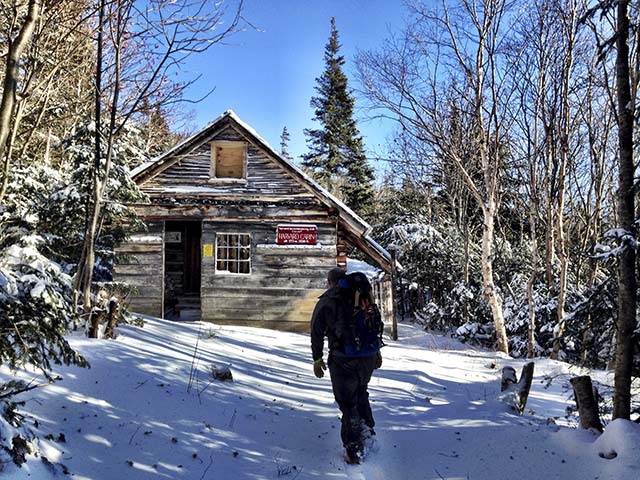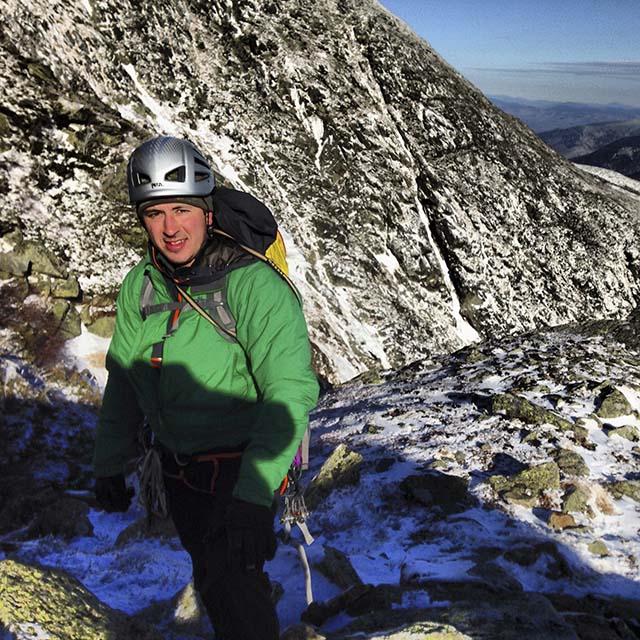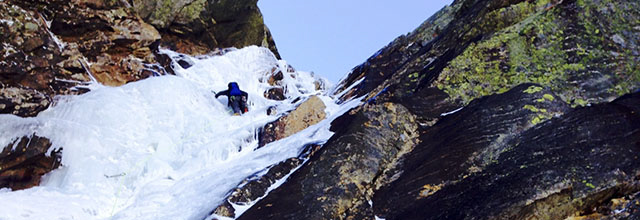A White Mountain Rescue
A WFR course gets some real world training with two simultaneous calls for rescue on Mt Washington.
By Christopher Broughton-Bossong
SOLO Wilderness Medicine Instructor
Students practice first aid and emergency response during a recent Wilderness First Responder Course.
During a summer teaching wilderness medical response courses in the White Mountains, I was contacted by New Hampshire Fish and Game to assist with a rescue on the Glenn Ellis trail, leading up Mt Washington. It was an overcast and rainy day and I happened to be in the middle of teaching a wilderness first responder course for SOLO when the call came in. This timing worked out quite well as it meant I had a class of roughly 20 additional and unsuspecting rescuers to bring along.
The Glenn Ellis trail is a rather arduous trek and the more hands for something like this the better. The call had come in for a young girl with a school group who had a seizure near the top of the trail. During the hike in, a ground hornet nest had been disturbed and clouded the trail with hornets, to add a bit more to the challenge. A hasty team had already arrived on scene and gotten the girl packaged into a litter. During the event, one of her classmates was nearing a panic attack and so her teacher took the initiative to walk this student out ahead.
As our team was hiking down with the young seizure patient, I was alerted, by radio, that there was a second call on the mountain and on the same trail. The teacher who hiked out ahead had fallen and may have broken her collar bone. Myself and another rescue ran ahead to assist her. Her collar bone seemed to be intact but she had broken her arm in three places. Each fracture prevented us from being able to splint or sling the next appropriately. We had to improvise. We managed to use several triangular bandages and an ace bandage to secure her arm well enough to allow her to comfortably walk out. A problem we had not anticipated was that with her arm slung extending downward in front of her, she could not lift her leg more than about six inches without her thigh bending her broken wrist. This made traversing a boulder field seemingly impossible.
We used a daypack, flipped it upside down and had her step through the straps with her legs then secured the lumbar strap around her waist, creating a makeshift harness. This allowed us to lift her onto, over and down the areas that she could not climb over on her own. She managed to walk herself the entire way back down the mountain to the waiting ambulances.
Tuckerman Ravine seen from the Lions Head Trail on Mt Washington, NH
Facilitating any rescue in a wilderness setting is inherently challenging and not without risk. Having the number of patients double with one of them sustaining multiple fractures is nearly enough for the challenges to quickly outweigh the available resources. We were fortunate that both patients were stable and we had a team of rescuers ready and able to think outside of the box and improvise the tools needed to overcome each new obstacle as it arose. I overheard one of the paramedics on that rescue who was also a state medical examiner comment on the students that he had never seen a litter team move someone so quickly while continuing to check vitals rotate out people on the litter and descend a mountain without setting the litter down. He had no idea that they were just students and had never done a rescue like this before. It was one of my proudest moments as an instructor. We never know when things will take a turn for the worse but having the confidence to meet those challenges and maintain your composure really can make the difference between life and death out there.
Be Prepared
Accidents happen. People get hurt, sick, or lost. Would you know what to do? By learning a few basic skills, you can make the difference between a good outcome and a bad one-and maybe even save a life.
Ascent Climbing and Rock Climb Fairfield are teaming up to bring SOLO’s Wilderness First Aid (WFA) and WIlderness First Responder (WFR) courses to Fairfield, Connecticut in May 2016.
Wilderness First Aid (16 hours)
May 21-22, 2016
Wilderness First Responder (80 hours)
May 24-31, 2016
Early Season Ice Climbing on Mt Washington
Pinnacle Gully is located on a dark, north-west facing wall of Huntington Ravine. The mountain is famous for some of the worlds worst weather and highest recorded wind speeds.
I got a call this week from good friend and local guide Matt Shove of Ragged Mountain Guides inviting me up to New Hampshire for some early season ice climbing on Mt Washington. The forecast on the observatory website warned of bone-chilling temperatures well below zero, wind gusts to 130mph and wind chills exceeding 60 below at the summit.
“I’m in!” I was psyched to get first “sticks” of the season before the forecasted rain and holiday busyness set in.
Pinnacle Gully is located on a dark, north-west facing wall of Huntington Ravine. The mountain is famous for some of the worlds worst weather and highest recorded wind speeds. High winds, low visibility, cold temps, fostbite and avalanche are just some of the hazards on a winter ascent. But as I drove north from Connecticut, it looked like we could catch a break in the weather. Skies were clearing and the low snow accumulation totals meant avalanche risk would be virtually non-existent.
When the route came into view we commented that the ice looked a little scrappy and might not be thick enough to accept even short ice screws. Climbing conditions on the route turned out to be pretty good. The climbing was fun and moderate but protection and belay anchors were scarce. Rushing water could be seen and heard just a few inches under the surface. We opted to move quickly and simul-climb the easier sections in search of belays and protected stances. Thin ice meant that loose rocks would fall in the narrow gully.
Stats:
Pinnacle Gully, Huntington Ravine, Mt Washington
Grade: III WI3
First Ascent: 1930, Scoville & Whittlesey
Temps: 0 to 10 F, wind chill ~30 below
Winds: Gusts to 62mph
Round Trip: 8 miles (approx)
Duration: ~7hrs Pinkham to Pinkham
We’re booking our ice climbing programs now! Get in touch or call (203) 675-5510 to book your ice climbing trip!













